
Evergreen Trees (Conifers), Vegetation Around Las Vegas
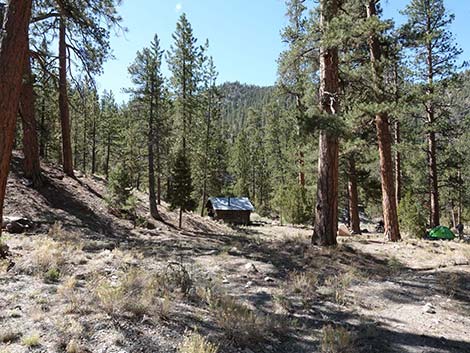 Ponderosa Pines in the Sheep Mountains |
General: Ponderosa Pine (Pinus ponderosa) is a coniferous (cone-bearing) tree with long, roundish needles set in bundles of 2 or 3(5), and the bundles radiate in all directions around the twigs. The cones are egg-shaped and about 5-inches long. The bark of older trees is reddish and deeply furrowed. The taxonomy of this species is in flux, with several recently re-defined species and subspecies. In southern Nevada, we seem to have Southwestern Ponderosa Pine (Pinus brachyptera) with short needles in bundles of 2 or 3 and short cones. It is also possible that, based in genetics, we have one or two undescribed species here rather than Pinus brachyptera, but they all look like other Ponderosa Pines. In the Spring Mountains and Sheep Range, Ponderosa Pine is the dominant species of tall tree in the Transition (Yellow Pine Forests) life zone. This subspecies also occurs in the Mormon Mountains and Clover Mountains. Family: Pine (Pinaceae). Other Names: Pacific Ponderosa Pine. |
 |
Plant Form: Tall, straight tree without lower branches when mature; broad, spreading crown. Height: To 125 feet tall. Trunk: To 4 feet in diameter. Bark: Young trees: dark brown; mature trees: light brown to orange; irregular fissures forming plates. Branches: In mature trees, absent from lower trunk; broad and spreading higher up. Needles: Bundles of 2-3; averaging 15-cm long; dark green; sheath persistent. |
 Needles in bundles of 2 or 3 |
Cones: Averaging 7.5-cm long; oval; light brown. Scales tipped with spine. Seeds: Small (6x4 mm) with a papery wing to facilitate wind dispersal. Habitat: Middle- and higher-elevation mountain slopes and canyons. Elevation: 6,000 to 7,500 feet, but much lower at Red Rock Canyon NCA. Distribution: British Columbia, Montana, and Nebraska, south into northern Mexico. In northern and northwestern Nevada, we seem to have Pinus ponderosa var. ponderosa, and in eastern and southern Nevada, we seem to have Pinus brachyptera. Comments: The taxonomy of this species is in flux as scientist continue examining the DNA and other characteristics of these trees. |
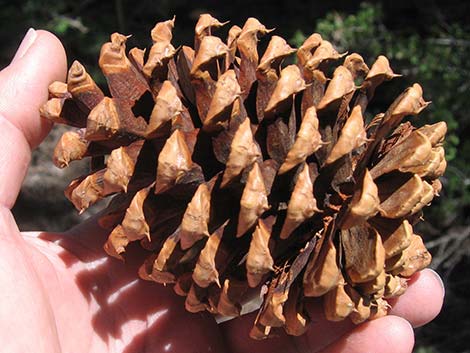 Small, egg-shaped cones |
Changing Taxonomy. Review the current thinking on Wikipedia, as there are some conflicts. A recent genetic study, Willyard et. al. (2021), Phylogenomics in the Hard Pines (Pinus subsection Ponderosae; Pinaceae) Confirms Paraphyly in Pinus ponderosa, and Places Pinus jeffreyi with the California Big Cone Pines, suggests three species in our area (but with lots of questions remaining): Southwestern Ponderosa Pine (Pinus brachyptera). Southern Nevada, Arizona, Utah, and New Mexico. Needles medium-length (15 cm). Needles per fascicle mainly in 3s, but with some having only 2. Cones short (7.5 cm). Rocky Mountains Ponderosa Pine (Pinus scopulorum). Colorado, Wyoming, and Montana. Needles short (11 cm). Needles per fascicle mainly in 2s. Cones short (7 cm). Columbia Ponderosa Pine (Pinus ponderosa var. ponderosa). California, Oregon, Washington, and Idaho, plus extreme northwest Nevada. Needles long (19 cm). Needles per fascicle mainly in 3s. Cones long (10 cm). |
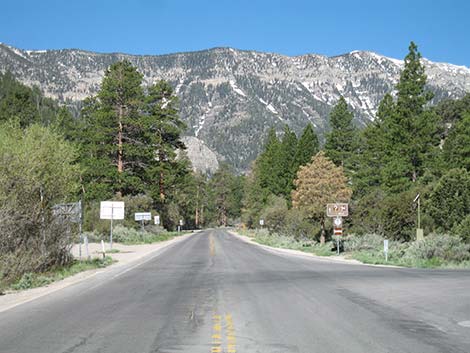 Entering the Ponderosa Pine forest on Mt. Charleston |
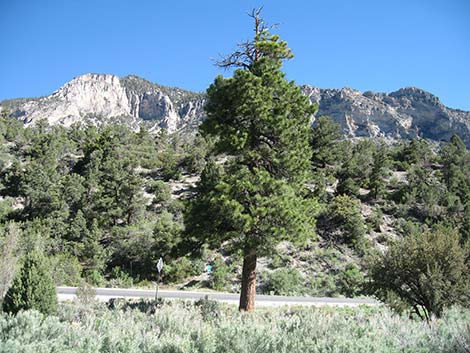 Isolated Ponderosa Pine |
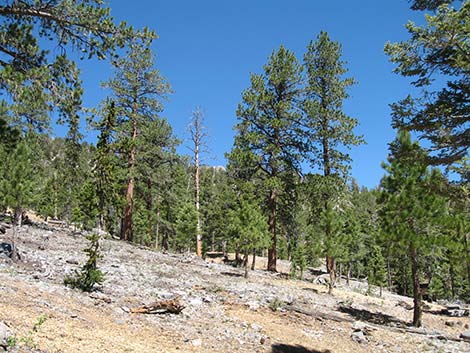 |
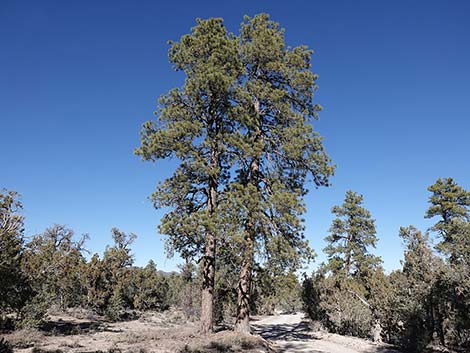 |
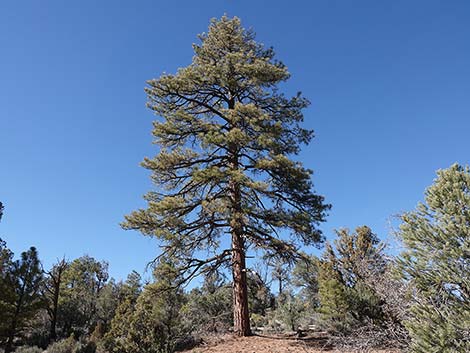 Ponderosa Pine |
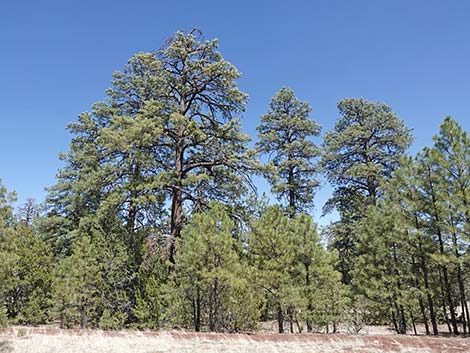 Ponderosa Pine forest |
 Desert Pass Campground on Desert National Wildlife Refuge |
 Four species of conifer: (L to R) Limber, Ponderosa, White Fir, Bristlecone |
 Mature, red bark |
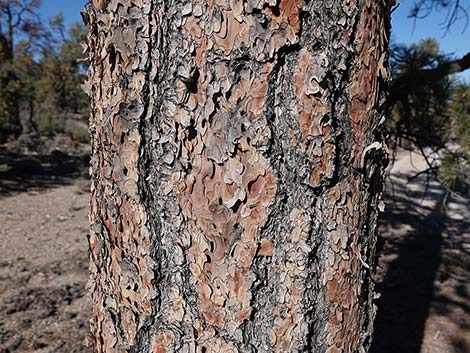 Mature, red bark |
 |
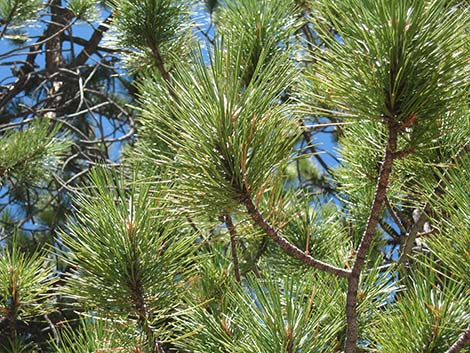 |
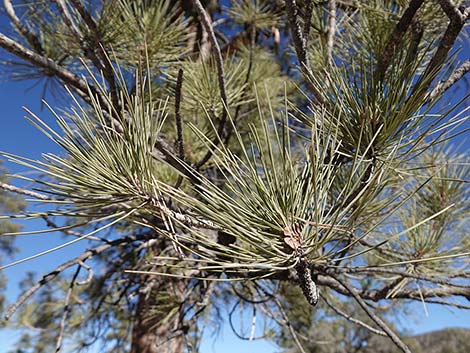 |
 |
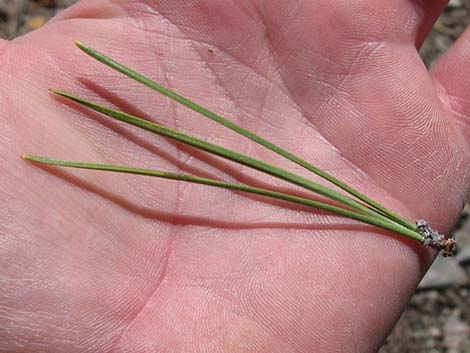 Usually three needles in a bundle |
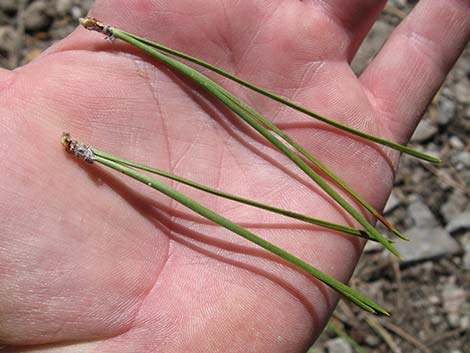 Usually three needles in a bundle, but sometime only two |
 Usually three needles in a bundle |
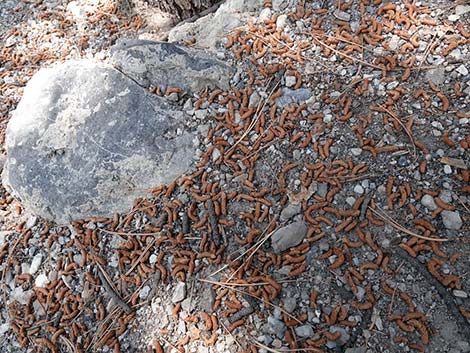 Spent male cones on the ground |
 Spent male cones |
 Female cones on the ground |
 |
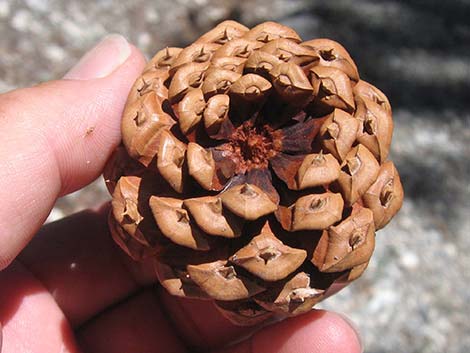 |
 |
 |
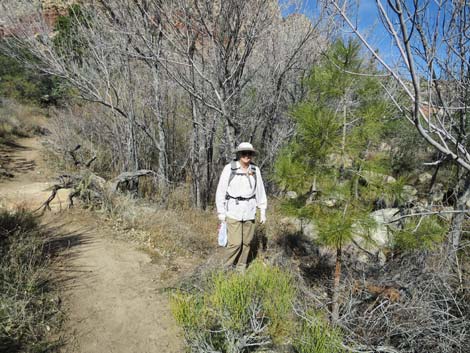 Small Ponderosa Pine with Mule Deer rub (cleaning antlers) |
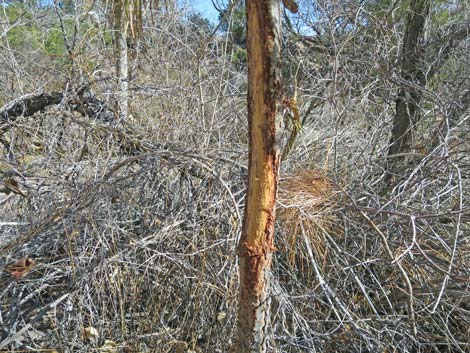 Small Ponderosa Pine with Mule Deer rub (cleaning antlers) |
 Small Ponderosa Pine with Mule Deer rub (cleaning antlers) |
 More to come ... |
Note: All distances, elevations, and other facts are approximate.
![]() ; Last updated 250424
; Last updated 250424
| All Conifers | Plant Species Index | Glossary | Copyright, Conditions, Disclaimer | Home |